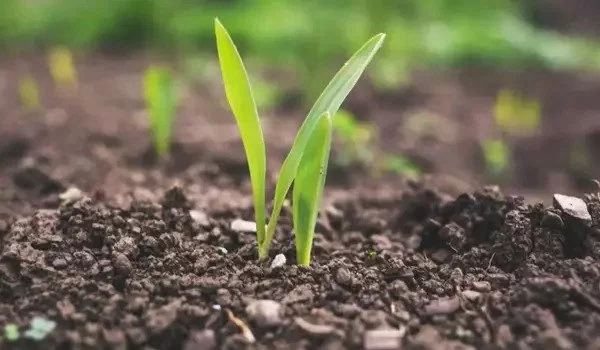Calculating soil carbon credits involves measuring the amount of carbon stored in the soil and estimating the rate at which it is sequestered or released. This process can be complex and time-consuming, as it requires measuring various soil properties, such as texture, organic matter content, and microbial activity. Research into methods for measuring and estimating soil carbon sequestration could simplify the process for calculating soil carbon credits and make it more accurate and reliable. This can help to promote the use of soil carbon sequestration as a tool for mitigating climate change, by providing a clear and consistent method for measuring and crediting carbon sequestration in agricultural and other land management practices.
A new study offers new insights into quantifying cropland carbon budgets and soil carbon credits, two critical metrics for climate change mitigation. Researchers assessed the impact of soil organic carbon (SOC) stock uncertainty on cropland carbon budget and soil carbon credit calculation using an advanced agroecosystem model on corn-soybean rotation systems in the United States Midwest.
They discovered that high-accuracy SOC concentration measurements are required to quantify a cropland carbon budget, but the current publicly available soil dataset is sufficient to calculate carbon credits accurately and with low uncertainty. The findings may make it easier to calculate soil carbon credits, which reward farmers for preserving soil carbon through crop rotation, no-tillage, cover crops, and other conservation practices that improve soil health.
A study led by researchers at the Agroecosystem Sustainability Center (ASC) at the University of Illinois Urbana-Champaign provides new insights for quantifying cropland carbon budgets and soil carbon credits, two important metrics for mitigating climate change.
The approach in this study can be applied to other models and used to assess important uncertainties of the carbon sequestration potential of various conservative land management practices.
Bin Peng
The findings, described in a paper published in the soil science journal Geoderma, could make it easier to calculate soil carbon credits, which reward farmers for conserving soil carbon through crop rotation, no-tillage, cover crops, and other conservation practices that improve soil health. The project was funded by the Advanced Research Projects Agency-Energy of the United States Department of Energy (ARPA-E).
Soil organic carbon (SOC) is released into the atmosphere as carbon dioxide, a greenhouse gas that contributes to climate change, as a result of agricultural activity. Several conservation practices have been proposed to aid in the sequestration of that carbon in the soil, but their ability to increase the total SOC in a soil profile, known as SOC stock, must be assessed locally.
Accurately calculating cropland carbon budgets and soil carbon credits is critical for assessing agriculture’s and conservation practices’ ability to mitigate climate change. These calculations are affected by local soil and climatic conditions, particularly the initial SOC stock used to initialize the calculation models. According to lead author Wang Zhou, Research Scientist at the ASC and the Department of Natural Resources and Environmental Sciences (NRES) at Illinois, various uncertainties exist in SOC stock datasets, and it’s unclear how this can affect cropland carbon budget and soil carbon credit calculations.

Researchers used an advanced and well-validated agroecosystem model known as ecosys to assess the impact of SOC stock uncertainty on cropland carbon budget and soil carbon credit calculation in corn-soybean rotation systems in the Midwest of the United States.
They discovered that high-accuracy SOC concentration measurements are required to quantify a cropland carbon budget, but the current publicly available soil dataset is sufficient to calculate carbon credits accurately and with low uncertainty.
“This is a very important study that reveals counter-intuitive findings. Initial soil carbon data is very important for all the downstream carbon budget calculation. However, carbon credit measures the relative soil carbon difference between a new practice and a business-as-usual scenario. We find that the uncertainty of initial soil carbon data has limited impacts on the final calculated soil carbon credit,” said ASC Founding Director Kaiyu Guan, Blue Waters Professor in NRES and the National Center for Supercomputing Applications (NCSA) at Illinois and lead of the DOE-funded SMARTFARM project at iSEE, which featured several co-authors on this paper.
The results indicate that expensive in-field soil sampling may not be required when focusing only on quantifying soil carbon credits from farm conservation practices — a major benefit for the agricultural carbon credit market.
“Uncertainty in SOC concentration measurements has a large impact on cropland carbon budget calculation, indicating that novel approaches, such as hyperspectral remote sensing, are required to estimate topsoil SOC concentration at a large scale to reduce interpolation uncertainty. However, uncertainty in SOC concentration has only a minor impact on soil carbon credit calculation, implying that focusing solely on quantifying soil carbon credit from additional management practices may not necessitate extensive in-field soil sampling, which is advantageous given its high cost “Zhou stated.
“The approach in this study can be applied to other models and used to assess important uncertainties of the carbon sequestration potential of various conservative land management practices,” said Bin Peng, senior research scientist at ASC and NRES and the study’s other primary author.
















